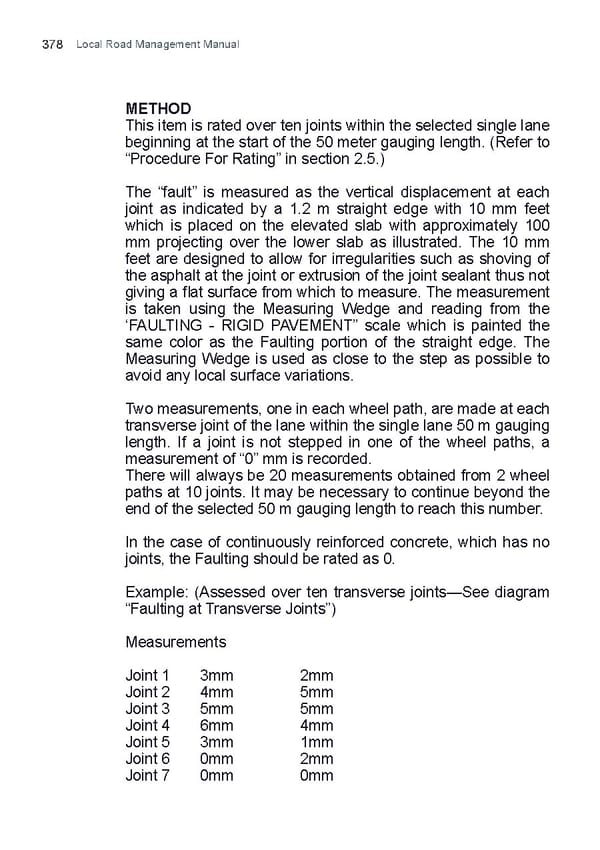Local Road Management Manual 378 METHOD This item is rated over ten joints within the selected single lane beginning at the start of the 50 meter gauging length. (Refer to “Procedure For Rating” in section 2.5.) The “fault” is measured as the vertical displacement at each joint as indicated by a 1.2 m straight edge with 10 mm feet which is placed on the elevated slab with approximately 100 mm projecting over the lower slab as illustrated. The 10 mm feet are designed to allow for irregularities such as shoving of the asphalt at the joint or extrusion of the joint sealant thus not giving a flat surface from which to measure. The measurement is taken using the Measuring Wedge and reading from the ‘FAULTING - RIGID PAVEMENT” scale which is painted the same color as the Faulting portion of the straight edge. The Measuring Wedge is used as close to the step as possible to avoid any local surface variations. Two measurements, one in each wheel path, are made at each transverse joint of the lane within the single lane 50 m gauging length. If a joint is not stepped in one of the wheel paths, a measurement of “0” mm is recorded. There will always be 20 measurements obtained from 2 wheel paths at 10 joints. It may be necessary to continue beyond the end of the selected 50 m gauging length to reach this number. In the case of continuously reinforced concrete, which has no joints, the Faulting should be rated as 0. Example: (Assessed over ten transverse joints—See diagram “Faulting at Transverse Joints”) Measurements Joint 1 3mm 2mm Joint 2 4mm 5mm Joint 3 5mm 5mm Joint 4 6mm 4mm Joint 5 3mm 1mm Joint 6 0mm 2mm Joint 7 0mm 0mm
 Local Road Management Manual Page 378 Page 380
Local Road Management Manual Page 378 Page 380